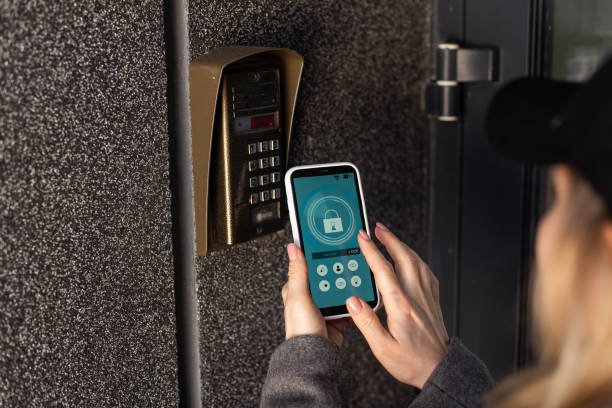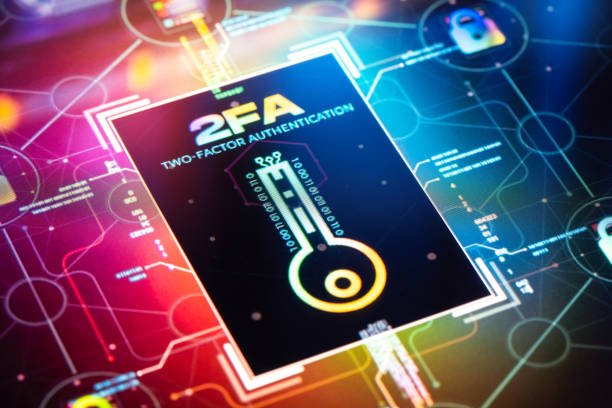1. Introduction: How to Integrate a Smart Lock into Your Smart Home System.
Our experiences with home spaces have undergone significant transformation due to smart homes and smart locks serve as their heart. With increasing worries about online safety in a connected society integrating smart locks into your smart home provides exceptional accessibility and safety. The content investigates the easy way to bring smart locks together with your existing smart gadgets and guides you on picking the ideal one.
2. What is a Smart Lock?

Understanding Smart Locks
Smarter locks are sophisticated electronic implementations of traditional locks that permit you to operate your door using various apps or commands. Unlike conventional locks smart locks allow remote connection and commonly connect with smart systems delivering both ease and increased protection.
3. Why Integrate a Smart Lock into Your Smart Home?
Benefits of Smart Lock Integration
Including a smart lock within your smart home brings more convenience while fortifying your safety. You can engage in door locking and unlocking from wherever you are with features including remote access. By automating entry points and connecting with various smart tools like cameras and lights smart locks allow for a complete security system.
4. Smart Home Systems Compatible with Smart Locks
Compatibility Check
To combine a smart lock with your smart home system you must ensure it is compatible with it. Amazon Alexa and Google Home are both well-liked options along with Apple HomeKit and Samsung SmartThings. A lot of smart locks available today are crafted to seamlessly integrate with these systems to create a smooth workflow.
5. Choosing the Right Smart Lock for Your Home

Factors to Consider
Think about compatibility when picking a smart lock and evaluate your smart home system along with battery and wired power options and Wi-Fi or Bluetooth connectivity. Consider aspects of remote enablement and automation as well as security solutions that include encryption and two-factor authentication.
6. Installing Your Smart Lock
Installation Guidelines
Typically installing a smart lock entails replacing the old lock with the modern smart model in a straightforward manner. Almost all smart locks provide detailed directions and installation supplies that make it simple for less experienced DIYers to configure them. Filling out requires expert services if necessary.
7. Connecting the Smart Lock to Your Home Network
Step-by-Step Guide
To connect your smart lock to your home network, follow these general steps:
- Access the app accompanying the lock.
- Make sure the smart lock is located near your Wi-Fi or Bluetooth signal.
- Install the app to attach the lock to your network.
- Check the connection through a remote lock and unlock action.
8. Integrating the Smart Lock with Your Smart Home Hub

Hub Integration Tips
If you use a smart hub like Amazon Echo, Google Nest, or Apple HomePod, integrating your smart lock is simple:
- Open the hub’s app.
- Introduce another device and decide on the smart lock.
- Complete the instructions from the application to connect the lock to your hub.
- Evaluate commands by saying ‘Lock the front door with Alexa.’
9. Setting Up Automation with Smart Locks
Automating Your Smart Home
Integrating technology increases the ease of use for smart locks. It is possible to make your lock unlock itself when you draw near your residence or set it to secure each night at a set time. Joining the lock to other components such as illumination or surveillance systems allows you to devise intelligent systems that raise security and simplify tasks.
10. Security Benefits of Smart Lock Integration
Enhanced Security Features
Smart locks possess modern security capabilities that include logged actions and the notification of intruders through alerts. When linked to other security systems at home smart locks form a solid barrier against unauthorized entry.
11. How Smart Locks Interact with Other Smart Devices

Creating a Connected System
A smart lock becomes even stronger if it is combined with other smart home appliances. For instance, after it has been confirmed you have arrived home, it can automatically turn your thermostat to a favorable temperature or turn on the lights. This can be put together professionally to work towards an efficient and secure home.
12. Voice Assistants and Smart Locks
Using Alexa, Google Assistant, and Siri
Voice control adds to convenience in a whole new way. From the use of voice assistants like Alexa, Google Assistant, or Siri, with seamless integration you may find yourself unlocking or locking your home with voice commands; some can even see the status of their lock remotely.
13. Troubleshooting Common Smart Lock Issues
Common Problems and Solutions
Although generally very reliable, sometimes these smart locks could have occasional problems like connectivity issues or low battery warnings. Then, if your smart lock is not responding, the most common solutions are usually to restart the device, check the internet connection, or simply replace the batteries.
14. Enhancing Security with Two-factor Authentication

Adding Extra Layers of Security
Two-factor authentication (2FA) adds an extra layer of security to your smart lock system. By requiring both a password and a one-time code sent to your phone, 2FA ensures that only authorized users can access your home.
15. Maintaining and Updating Your Smart Lock
Keeping Your System Up-to-Date
Regular maintenance is, therefore recommended to be kept and cleaned regularly also including the firmware updates; the manufacturers have firmware updates that add new features to the system while allowing necessary security patches. 16 Smart locks vary in price depending on their features and compatibility. Basic models start around $100, while more advanced systems with full smart home integration can cost upwards of $300. It’s essential to choose a lock that fits both your needs and your budget.
16. Cost and Budget Considerations
Smart Lock Costs
The price of smart locks varies with features and compatibility. The basic models start from $100, while models that offer full integration into the smart home will range from $300 upwards. It would be important to get a lock that fits your needs as well as your budget.
17. Real-life examples of Smart Lock Integration

Case Studies
Many homeowners have successfully combined smart locks with their other smart home systems. For example, a user connected their smart lock to a security camera and a doorbell that would feed them live whenever the lock was engaged or disengaged for the overall security of the house to be improved.
18. Future of Smart Locks in Home Automation
Trends and Innovations
And along with this, something new on the horizon comes – innovations in biometrics, facial recognition, and AI-driven security features. The more it evolves, the brighter the smart lock case will be for that modernity and evolution.
19. Expert Insights on Smart Home Security
Industry Expert Opinions
Security experts recommend smart locks as an essential part of any smart home setup. Experts note that smart locks provide flexibility, allowing homeowners to grant temporary access to guests or service providers, while also delivering robust security through encryption and remote monitoring.
20. Conclusion
Smart locks represent the entrance to a highly integrated home system that provides security and convenience. Properly choosing, installing, and automating your smart lock can help improve your home’s efficiency and safety. Clearly, with technology being developed every day, smart locks are going to be a fundamental part of smart home automation.





One Comment on “How to Integrate a Smart Lock into Your Smart Home System.”